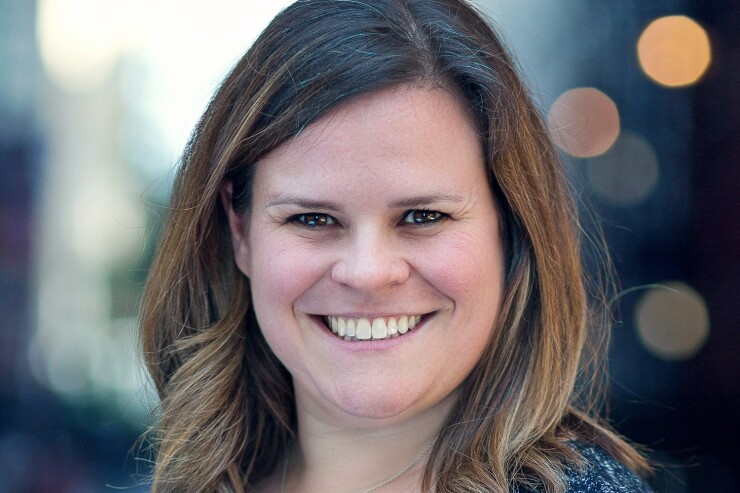With about 100 flood-control dams in need of rehabilitation in Oklahoma, a state bond authority sold bonds last week to generate enough money to repair just a handful of them.
Oklahoma is not alone in struggling to fund repairs for aging dams, whose failure could result in the loss of life. The Association of State Dam Safety Officials estimated the cost of fixing the nation’s 14,343 so-called high-hazard potential non-federal dams at $20.42 billion in 2019. The 92,000 dams in the United States have an average age of 61 years and 70% are regulated by states, according to the U.S. Army Corps of Engineers'
The

Trey Lam, the Oklahoma Conservation Commission’s executive director, said the bond issue, authorized a couple of years ago by the state legislature, will generate the 35% state share required for the 65% federal match.
“We got enough to fund about maybe five or six dams, maybe a little more out of the $17.5 million we’re going to do, but we’ve got another 90 to do” he said. “I would suspect in a few more years there’s going to be some more bonds sold to continue to finance our portion of it. I think that is a more palatable way to do it than try to get it all through state appropriations.”
The Oklahoma bonds, priced through Stifel, were rated AA-minus by S&P Global Ratings and Fitch Ratings based on a lease agreement between the authority and the commission, which will make debt payments from funds annually appropriated by the Oklahoma Legislature.
Hilltop Securities was municipal advisor. Floyd Law Firm was bond counsel.
The bonds priced to yield from 1.704% for the July 2023 maturity to 3.841 for the 2040, according to the Municipal Securities Rulemaking Board's EMMA website.
The state’s 2,107 flood control dams were mostly constructed in the 1940s and 1950s. At the end of 2016, 260 were classified as high hazard with about 100 of those not meeting current state or federal safety criteria.
Lam said the average price tag for rehabilitating a dam rose from an average $750,000 in 2007 to $2.6 million in 2019, with recent projects costing over $11 million.
“The construction cost, engineering, materials, have just escalated significantly,” he added.
Only about $2.3 billion of the $1.1 trillion infrastructure package President Joe Biden signed into law in November is earmarked for dam repairs, upgrades, and removals nationwide.
“We expect many projects will still need bond financing in order to be fully financed,” said Katie Kramer, vice president of the Council of Development Finance Agencies. “The federal funds will not be enough to address all of the capital needs for a project. Exempt facility bonds are regularly used to finance dam repairs and construction, and we expect them to be tapped in coordination with federal funding.”
The Infrastructure Investment and Jobs Act will provide $585 million for high hazard dams under a Federal Emergency Management Agency program begun in 2016 and $118 million for a USDA program for small watershed rehab projects, according to Mark Ogden, technical specialist with the Association of State Dam Safety Officials.
“It’s certainly a giant leap forward from what we had experienced in the past,” he said, adding that appropriations for both programs have fallen short.
Congress only appropriated about $12 million in fiscal 2021 for FEMA's High Hazard Potential Dam Grant Program even though the 2016 act authorized $60 million in spending for that year.
Funding for the Watershed Rehabilitation Program from the USDA’s Natural Resources Conservation Service was $12.7 million for 46 projects in six states in fiscal 2021, down from $25.6 million for 30 projects in 18 states and 51 dam assessments in six states in fiscal 2020.
New Jersey voters in 2003 approved $200 million of general obligation bonds for water-related projects, including $95 million earmarked for low-interest loans for dam repairs. In November, the state announced the availability of $40 million in loans for local governments and private dam owners.
"New Jersey is one of the few states to provide funding for the upgrade and maintenance of dams through periodic bond acts that ensure a stable source of funding for these types of projects," the state Department of Environmental Protection said in a Nov. 15
The state had 229 dams classified as potential high hazard, according to the American Society of Civil Engineers’ 2021 infrastructure report card.
The U.S. Treasury Department’s
“With broadened eligibility under the final rule, SLFRF funds may be used to fund additional types of projects — such as additional stormwater infrastructure, residential wells, lead remediation, and certain rehabilitation of dams and reservoirs beyond the (Clean Water State Revolving Fund) and (Drinking Water State Revolving Fund) if they are found to be ‘necessary’ according to the definition provided,” the regulation said.
Another hopeful sign on the funding front is the $25.8 billion Twenty-First Century Dams Act, which includes grant funding and low-interest loans for dam repairs. Legislation was introduced in Congress in July by U.S. Rep. Annie Kuster, D-New Hampshire, and Sen. Dianne Feinstein, D-California.
“Hopefully, the federal funding that’s in place will help take care of some of the worst situations,” Ogden said. “There are unfortunately a lot of these problem dams out there. Funding is a real issue in terms of getting them repaired.”





